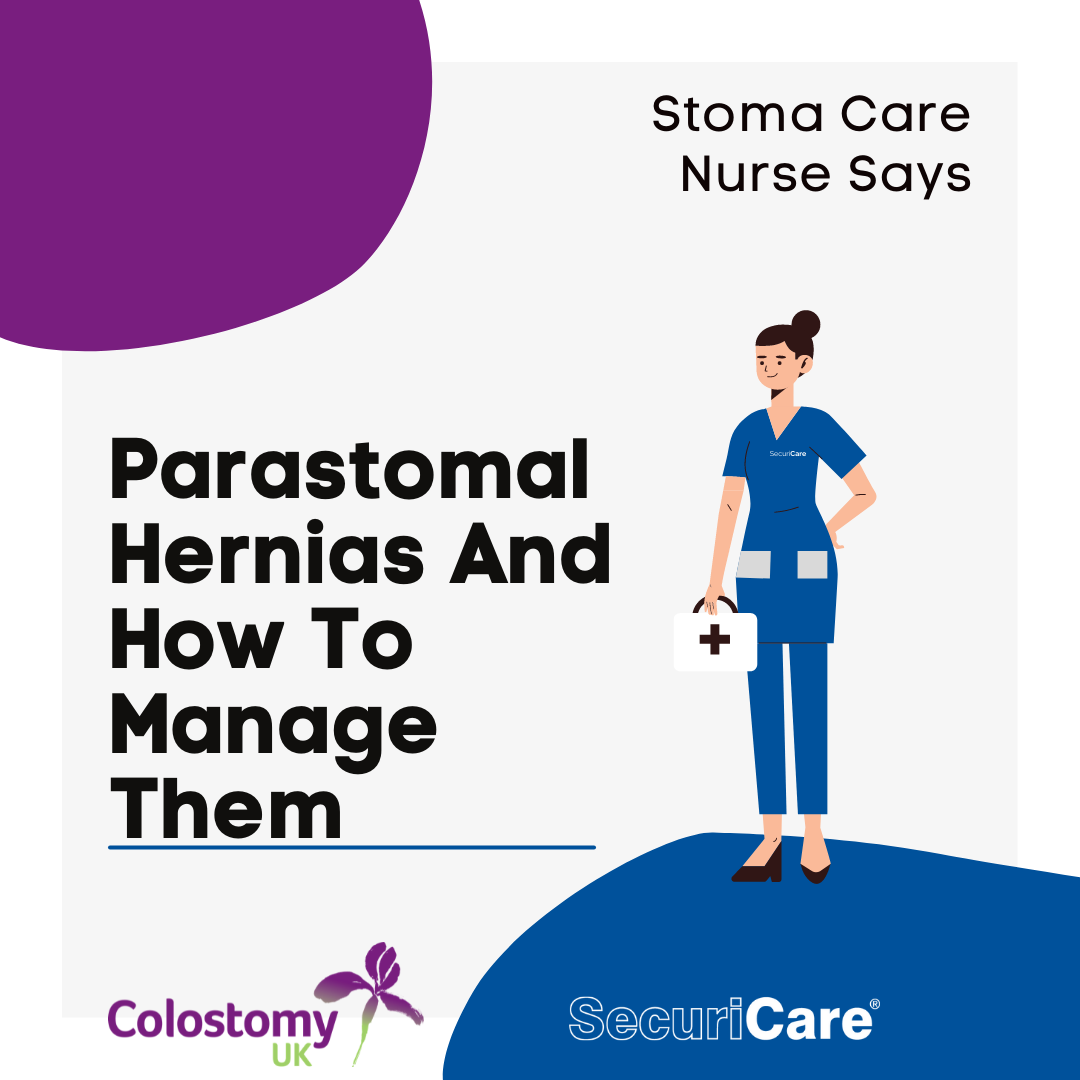Stoma Care Nurse Says: Parastomal Hernias And How To Manage Them
17 September, 2021

We have teamed up with SecuriCare a to bring you our ‘Stoma Care Nurse Says’ blog series. In this series, SecuriCare’s Stoma Care Nurses will be giving you specialist advice about caring for your stoma.
In this blog, a Stoma Care Nurse shares her guide to ‘Parastomal Hernias And How To Manage Them’…
During stoma surgery, the surgeon makes an opening through the abdominal wall to pull a piece of bowel through to make the stoma. This opening can be a weakness within the abdominal wall. The opening may enlarge, allowing intestine, fat or other abdominal tissue to bulge through it and develop a hernia.
Some people are prone to hernias.
This is because they are born with a genetic inability to produce collagen (protein) to repair and strengthen muscle and they may already have a history of hernias in their body. Some people are born with a normal ability to produce collagen, but lose it due to malnutrition, infection, corticosteroid use or smoking.
The following can help to reduce the risk of developing a hernia and can help to prevent hernias from getting worse:
• Reduce any form of heavy lifting
• Perform light abdominal exercises to strengthen the abdominal wall
• Support the abdominal area with support belts or support garments
• Try to hold a pillow on your abdomen if you need to cough or sneeze. This supports your abdominal wall and reduces intra-abdominal pressure. A support belt/garment will also help
• Prevent constipation by drinking plenty of fluids and practice good nutrition with plenty of fibre and bulk in the diet. You might like to consider taking regular fibre or a bulking agent to maintain a regular soft output from your stoma
• Avoid gaining weight, or try to lose weight if you need to.
Although a parastomal hernia may restrict you from doing certain things, you can still live a ‘normal life’.
Things like gentle exercise, eating and drinking well, a good stoma product system and a hernia support belt or garment can help you manage your hernia and live a normal life.
Many people who develop a parastomal hernia don’t have any problems or complications.
Problems include unpredictable stoma functioning where output alternates between constipation and diarrhoea. The swelling under the skin of the stoma can sometimes cause pain or discomfort. Very rarely the intestines can become trapped in the hernia, this called strangulation. This can cause extreme pain and can require emergency surgery. Sometimes a hernia can make applying your stoma pouch challenging and can lead to problems such as leakage. It’s important to find a stoma pouch that moulds around your stoma to create a secure seal to help reduce the risk of leaks.
If you are conscious about your hernia, you can ask for advice.
You can ask your surgeon about different options for hernia repair surgery, hernia repair surgery success rates and hernia recurrence rates after surgery. There are risk factors which include general surgical risks such as pain, infection and injury. You might want to consider whether your parastomal hernia is affecting your health and wellbeing enough to consider another operation.
A hernia support belt or garment can help minimise pain as they are designed to support your abdominal muscles, especially during movement, coughing and sneezing. The best way to put on your belt is when you are laying down on your back. Your parastomal hernia will naturally fall back into its original space in the body. When you apply your belt or garment, the parastomal hernia should then be supported by the belt to stay in this space and this will help you feel more comfortable.
If you’re concerned about the condition of your parastomal hernia, are experiencing complications, or you think you might have developed a parastomal hernia, please speak to your Stoma Care Nurse – we’re here to help!





